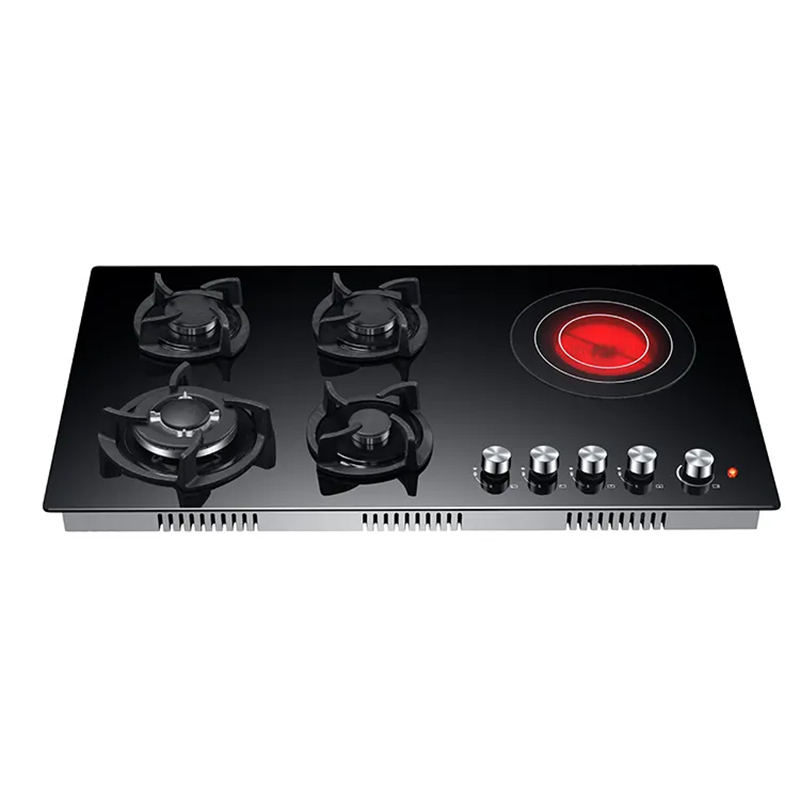How to adjust a Gas stove with a large or small flame? A gas stove is a kitchen appliance commonly used in any household, and the quality of a gas stove is closely related to everyone's daily life. When purchasing a gas stove, the first thing to consider is its quality, followed by its safety factor and environmental friendliness. After purchasing, it is inevitable to encounter difficulties in use throughout the entire process, especially in adjusting the stove flame. Today, the gas stove manufacturer will explain to you the difficult problems of using a gas stove:

1. How to adjust the intake valve of the gas stove? Hold up the gas stove with your hands, and there are two copper plates with rocker shapes at the junction of the burner and nozzle. One of them adjusts the flame, while the other adjusts it to turn red; They all press the torsion spring tightly against the burner and gently shake the rocker to adjust the size of the air inlet, thereby changing the situation of the flame. When the combustion situation is not ideal, such as yellow flames, hot explosions, flames that are too large or too long, or when combustion noise or quenching occurs, adjusting the air damper can achieve a more ideal combustion situation.
2. What is the problem with a large flame in a gas stove? 1. The design scheme of the gas stove itself has a relatively small power, and the general design scheme for household gas stoves is 3.0kW 2. The working pressure of the natural gas pipeline is not sufficient. The nominal pressure of liquefied gas is 1000Pa, which is 2000Pa, and that of compressed natural gas is 2800Pa 3. The combustion hole of the gas stove is blocked, which is relatively easy to handle. You can remove the burner and clean it up 4. The quality of liquefied gas vapor is poor, and there are many residual components 3. What is the problem with a small flame in a gas stove? Excellent burner, light blue flame, abundant firepower, and uniform flame relative height and size. If a flame occurs for a long time, it is considered an abnormal situation. The main reason for the small size of the flames and the method of clearing them are as follows: (1) When the gas stove is cooking ingredients, there may be occasional overflow of cargo or dirty things falling into the fire hole, blocking the burner fire hole, causing the gas and gas mixture to be obstructed, resulting in a small and weak flame. The cleaning method is to remove the burner, remove the blocked fire hole, and clean it clean with clean water. Through this type of solved burner, common faults with small flames can generally be eliminated; (2) The pneumatic valve is almost depleted. When using compressed natural gas in gas stoves, if the compressed natural gas in the cylinder is almost used up, due to insufficient working pressure or excessive residual liquid in the cylinder, the combustion flame will also be reduced. At this point, a new gas cylinder should be replaced; (3) The pressure regulating valve nozzle or gas stove nozzle is blocked. When the pressure regulating valve or gas stove nozzle is blocked, natural gas cannot be sprayed out smoothly, and the combustion flame is weak. The cleaning method is to use fine stainless steel wire to pass through the nozzle; (4) When the mixing valve is too small, the mixing valve can be enlarged; (5) When the rubber hose is flattened or bent, the air supply is small. If the flow of goods is obstructed when the rubber hose is bent, the rubber hose can be straightened; If the rubber hose is flattened, it can be replaced with a new one; (6) The use of pipeline burners in gas stoves is also likely due to small pipeline specifications, rusting and blockage in the pipes, resulting in a small flame. Contact the natural gas company for handling. If all the flames in the gas stove at home are dark blue, it indicates that liquefied gas is very pure and burns very well. But if you are careful, you will definitely notice that sometimes the blue flames in the outfield will show some light yellow and continue to smoke the bottom pot black. In summary, if liquefied gas is burned sufficiently, it should display a blue flame; if not burned sufficiently, it will display a pale yellow flame. Gas and liquefied petroleum gas are the same.
